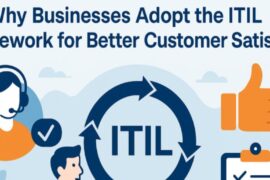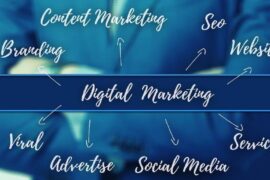Businesses are no longer measured solely by their efficiency or scale. Instead, their ability to adapt, innovate, and create smarter solutions defines their success. As new technologies continue to reshape industries, organizations must rethink how they operate and build strategies that prepare them not just for the present, but for an innovative future.
The Shift Toward Smarter Innovation
Innovation is not simply about having new ideas; it’s about using technology intelligently to solve real-world problems. Businesses today face complex challenges such as sustainability demands, rising customer expectations, and increased competition. Meeting these challenges requires solutions that go beyond traditional models, integrating smart systems, data-driven insights, and collaborative technologies.
Companies that prioritize smart innovation position themselves to be more resilient, flexible, and future-ready. This shift also redefines leadership strategies, encouraging a culture where creativity, adaptability, and efficiency are equally valued. To explore how intelligent technology strategies can transform business innovation, visit cisilion.com.
Technology as the Core Enabler
Technology sits at the heart of smarter solutions. From cloud computing and artificial intelligence to automation and advanced cybersecurity, innovation thrives when businesses leverage the right tools. Technology doesn’t just streamline operations; it creates entirely new opportunities for growth and customer engagement.
For instance, AI-driven analytics allow businesses to understand customer behaviors on a deeper level, while automation can free teams from repetitive tasks to focus on creative and strategic initiatives. Similarly, collaboration platforms have transformed how teams connect across geographies, breaking down barriers and enabling true global innovation.
Building Solutions with Agility
One of the most critical elements in creating smarter solutions is agility. Traditional business models often rely on rigid structures that slow down innovation. By adopting agile methodologies, organizations can pivot quickly, respond to market changes, and continuously improve their offerings.
Agility is not only about speed; it’s also about experimentation. Businesses that encourage testing, iteration, and adaptation are more likely to uncover breakthroughs. This mindset shifts the focus from fearing mistakes to learning from them, ultimately fueling smarter, more innovative outcomes.
Collaboration for a Smarter Future
No organization can create smarter solutions in isolation. Partnerships and collaboration are essential for unlocking new ideas and possibilities. By working with technology providers, research institutions, and even competitors, businesses can harness diverse expertise to develop groundbreaking solutions.
Collaboration also extends internally. Cross-functional teams that combine skills from IT, marketing, operations, and leadership can uncover smarter solutions that would not emerge in silos. This collective approach enhances creativity and accelerates innovation across the organization.
The Human Element of Innovation
While technology drives smarter solutions, people remain at the core of innovation. Employees need to be empowered with tools, knowledge, and the right culture to contribute effectively. A future-focused workforce requires continuous learning, adaptability, and a willingness to embrace change.
Creating smarter solutions also means designing with people in mind. Customer-centric innovation ensures that technology is not just advanced but meaningful. By aligning solutions with real human needs, businesses build stronger relationships and long-term trust.
Preparing for Tomorrow
The pace of change is only accelerating, and the future will belong to organizations that can anticipate trends and act proactively. Smarter solutions are not just about solving current problems but preparing for tomorrow’s opportunities. Whether it’s integrating AI more deeply, adopting sustainable practices, or enhancing security, businesses must look ahead with confidence and clarity.
Future readiness involves investing in technology, but also in vision. It’s about fostering a culture that embraces innovation, encourages creativity, and prioritizes adaptability. By doing so, businesses create not just smarter solutions but a smarter path to long-term success.
Conclusion
Smarter solutions are the building blocks of an innovative future. They combine technology, agility, collaboration, and human creativity to shape a world where businesses thrive in dynamic environments. Forward-thinking organizations that embrace this mindset today will be the leaders of tomorrow.































